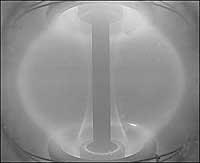Column: nuclear fusion target
The fusion of atoms is the nuclear energy that gives life to stars. Scientists have been trying to get it in the laboratory for 50 years, since it has advantages that conventional nuclear energy, nuclear fission, does not have. However, it still has great technical difficulties.

For nuclear fusion to occur, they are usually placed first in the magnetic field and separate the electrons and nucleus from the atoms. This generates an electrically charged fluid — plasma. However, for the cores to converge it is necessary to overcome the repulsion of the loads, which requires an extremely high temperature or pressure. In the Sun, for example, it occurs at 15 million degrees and 100,000 atmospheres, but in the reactors that have developed the researchers it is not possible to reach such a high pressure that it forces them to increase their temperature.
Although scientists have never managed to use large experimental fusion reactors, the UK Atomic Energy Authority has announced that the use of smaller reactors can be easier, cheaper and faster, as it is technically easier to maintain small magnetic fields. In this way, it is developing what could be the first commercial fusion reactor called Banda.
Today, it has great limitations, but after a few decades, fusion reactors can go on sale without urban pollution, since the elements used are not pollutants, and produce cheap energy. In any case, it would produce thermal pollution, but it would be an inexhaustible source of energy.





